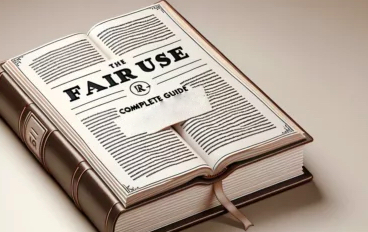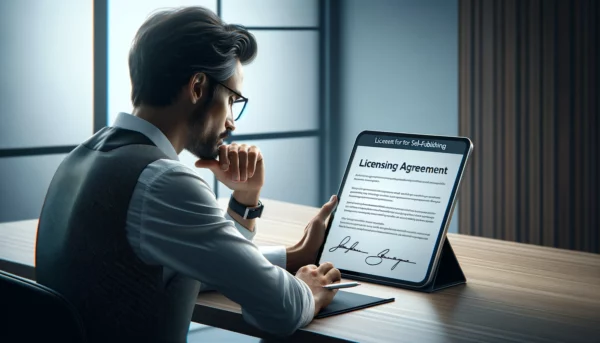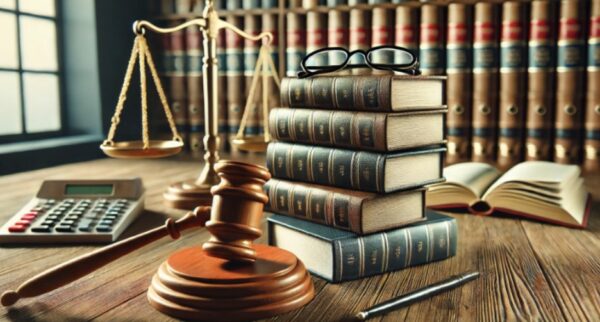In the intricate landscape of copyright law, the doctrine of fair use emerges as a pivotal concept, especially for authors and publishers navigating the treacherous waters of content creation and distribution. This principle serves as a safeguard, allowing for the limited use of copyrighted material without the need to seek permission from, or compensate, the copyright holder. It’s designed to balance the rights of the copyright owner with the public’s interest in the free flow of ideas, information, and creativity.
For authors and publishers, understanding and applying fair use is not just about legal compliance; it’s about fostering innovation and cultural exchange. It enables the use of existing works for purposes such as commentary, criticism, news reporting, teaching, scholarship, and research, which are vital for the enrichment of society’s intellectual discourse. Thus, a comprehensive grasp of fair use is essential, as it not only protects against potential copyright infringement claims but also empowers authors and publishers to work with a broader canvas, enhancing their contributions to the literary and educational fields.
Through this article, readers will gain the knowledge and confidence to effectively and responsibly apply the principles of fair use for authors in their professional activities, ensuring their practices are both legally sound and reasonable and conducive to the promotion of creativity and innovation.
Understanding Copyright Law
Copyright law serves as the cornerstone of intellectual property rights, designed to protect original works of authorship fixed in a tangible medium of expression. This broad definition encompasses a wide range of creative outputs, from literary, musical, and dramatic works to software, graphics, and architectural designs. By granting copyright, the law affords creators exclusive rights over their creations, ensuring they have control over the reproduction, distribution, and adaptation of their work. These rights, which typically last for the lifetime of the author plus an additional 70 years posthumously, are fundamental in encouraging artistic innovation and cultural development.
The rights bestowed upon copyright holders are multifaceted. They include the ability to produce copies of the work, prepare derivative works based on the original, distribute copies by sale or transfer of ownership, and publicly perform or display the work. These rights enable copyright owners to monetize their creations through various means, including publishing, licensing, and public performances, providing a financial incentive for the creation of new works.
Moreover, copyright plays a crucial role in protecting the integrity and originality of creative works. It ensures that authors and creators receive recognition and remuneration for their own ideas and contributions, fostering an environment where creativity and innovation can flourish. By preventing unauthorized use, copyright law maintains the economic value of creative works, encouraging further investment in the arts and cultural industries. This protective framework is essential not only for individual creators but also for the broader cultural and educational landscapes, as it preserves the diversity and accessibility of creative content for society at large.
Trademarking, another vital aspect of intellectual property law, protects symbols, names, and slogans used to identify and distinguish products or services in the marketplace. Unlike copyrights, which safeguard creative works, trademarks protect brand identity. By registering a trademark, businesses secure exclusive rights to use specific marks in commerce, preventing others from using similar signs that could cause confusion. This protection fosters consumer trust and brand loyalty, ensuring that companies can build and maintain their reputation without the risk of infringement. Trademarks can last indefinitely, provided they continue to be used in commerce and are renewed periodically.
Your Publishing Journey Awaits – Start NowThe Concept of Fair Use
Fair use is a critical exception to copyright law that permits limited use of copyrighted material without requiring permission from or compensation to the copyright holder. This doctrine is designed to strike a balance between the rights of copyright owners and the public’s interest in accessing, using, and experiencing creative works. Fair use supports key societal and cultural activities, including criticism, comment, news reporting, teaching, scholarship, and research, by allowing for the incorporation of copyrighted materials in these contexts under certain conditions.
Determining whether a specific use qualifies as fair use involves a nuanced analysis guided by a four-factor test, as outlined in copyright law:
1. Purpose and Character of the Use:
This factor examines several factors in how and why the copyrighted material is being used. Uses that are transformative, meaning they add new expression or meaning to the original, and those for non-commercial, educational, or scholarly purposes are more likely to be considered fair use. The more the use contributes to the public good or advances knowledge or cultural enrichment, the stronger the case for fair use.
2. Nature of the Copyrighted Work:
The nature of the copyrighted material plays a significant role in the fair use analysis. Generally, factual works are more susceptible to fair use than highly creative works like fiction, poetry, or music. Moreover, published works are more likely to be subject to fair use compared to unpublished works, which enjoy a higher level of protection.
3. Amount and Substantiality of the Portion Used:
This factor considers both the quantity and the significance of the copyrighted portion used in relation to the copyrighted work as a whole. Using a small, less significant portion is of course more likely to favor fair use. However, even a small portion can weigh against fair use if it’s considered the “heart” of the work.
4. Effect of the Use on the Potential Market:
The impact of the use on the market value of the copyrighted work is a crucial consideration. If the use could substitute for the original work and thereby harm the market or potential market for any such use of the copyrighted work, it’s less likely to be deemed fair. This includes considering whether the use could detract from sales of the original or licensed uses.
Each case of fair use is unique, of course, and all four factors must be considered collectively in determining whether a particular use qualifies as fair. No single factor is determinative on its own, and the analysis of one factor can often involve complex legal judgments.
Fair Use for Authors: Navigating the Grey Areas
For authors, the doctrine of fair use presents both opportunities and challenges. It allows for the incorporation of copyrighted material into new works, but navigating the fine line between fair and infringing use requires careful consideration. Authors can consider their use of copyrighted material as fair under certain circumstances, particularly when the use is transformative, serves a scholarly or educational purpose, or contributes to cultural discourse.
Transformative Use
One of the key aspects of fair uses that authors must consider is whether their use of copyrighted material adds new expression, meaning, or message to the original work, thereby making it transformative. For instance, using a short excerpt from a novel in a literary critique that analyzes the original author’s writing style or thematic elements can be considered fair use because the critique provides new insight and understanding of the original work.
Quotations
Quotations are a common example of fair use in writing, provided they are used appropriately. Authors can quote from copyrighted works for purposes such as criticism, comment, review, or scholarly analysis. However, the extent of the quotation should be limited to what is necessary to achieve the intended purpose. Over-reliance on extensive quotes or using quotes that form the “heart” of the copyrighted work can tip the balance away from fair use.
Criticism and Parody
Criticism and parody are areas where fair use is often applied. Authors writing critical essays or reviews can use excerpts from the work being criticized to illustrate their points. Parody, which uses elements of a work to mock or comment on it (or something else), is also protected under fair use, as it is inherently transformative. The key is that the parody must convey an original message or expression.
Economic Harm and Commercial Value
One of the most critical factors authors must consider is the potential economic harm their use might cause to the original work’s market value. If the new work competes directly with the original or its derivative works, or if it could serve as a substitute, thereby diminishing sales or licensing opportunities, fair use is less likely to apply. Authors should be particularly cautious when using copyrighted material in works that are commercial in nature, as commercial uses are scrutinized more heavily under the fair use doctrine.
In conclusion, while fair use provides a valuable avenue for authors to engage with and build upon existing works, it demands a nuanced understanding of the legal framework and a careful assessment of how the copyrighted material is being used. Authors must weigh their creative needs against the rights of the original copyright holders, ensuring that their use falls within the boundaries of fair use, particularly in terms of transformation, limited quotation, purpose of criticism or parody, and avoiding economic harm to the original work.
Your Publishing Journey Awaits – Start NowFair Use in Publishing: A Publisher’s Guide
In the publishing industry, fair use plays a crucial role from manuscript selection through to the final stages of publication. Publishers must navigate the complexities of copyright law to ensure that the incorporation of copyrighted material into their publications falls within the bounds of fair use, thereby avoiding legal pitfalls.
Application of Fair Use
The application of fair use in publishing encompasses a broad spectrum of activities. During the editorial process, publishers might also seek permission to include excerpts from copyrighted works for purposes such as literary criticism, commentary, or academic analysis within the publications they produce. This could involve quoting from other literary works in a novel’s text, including excerpts of copyrighted material in academic journals, or reproducing images in a scholarly critique.
Guidelines for Publishers
To assess fair use in potential publications, publishers should consider:
- Purpose and Character: Ensure the use serves a transformative purpose, such as critique, commentary, or educational analysis.
- Nature of the Copyrighted Work: Factual works are more amenable to fair use, but even creative works can be used under the right circumstances.
- Amount and Substantiality: Use only the portion of the copyrighted work necessary for the intended purpose. The use of central or “heart” parts of a work should be avoided unless critical for the transformative purpose.
- Market Effect: Assess whether the use could harm the market for the original work. This includes considering not just current but potential future markets.
By generally adhering to these general guidelines, publishers can navigate the nuances of fair use, ensuring their practices are both legally compliant and ethically sound, thereby fostering a rich and diverse publishing landscape.
Seeking Permission: When Fair Use Isn’t Enough
There are instances where the intended use of copyrighted material does not fall clearly under the umbrella of fair use, necessitating permission from the copyright owner. Such circumstances typically involve uses that might have a significant impact on the market value of the original work, uses of substantial portions or the “heart” of the work, or uses in a commercial context where the new work competes directly with the original.
Circumstances Requiring Permission
- Extensive Use: Using large portions of a copyrighted work, especially beyond what is considered minimal for critique, commentary, or educational purposes.
- Commercial Use: When the new work is intended for commercial sale and could potentially diminish the market or demand for the original.
- Non-Transformative Use: Reproducing a work without adding new meaning, message, or value, such as using images or text in a way that merely replicates the original work’s intent.
Steps to Request Permission
1. Identify the Copyright Owner: This may be the author, publisher, rights holders, or a rights organization representing the creator.
2. Prepare Your Request: Clearly articulate the specific material you wish to use, how it will be used, the scope of the use (such as the number of copies or distribution method), and the duration of the use.
3. Contact the Copyright Owner: Reach out formally, often through a letter or email, detailing your request and any proposed terms, such as compensation or credit.
4. Negotiate Terms: Be prepared to discuss the terms of use, which may include a fee or specific conditions under which the material can be used.
5. Formalize the Agreement: Ensure any agreement is in writing, specifying the rights granted, any restrictions, and the duration of the license.
By understanding when permission is needed and following these steps, authors and publishers can navigate copyright considerations effectively, ensuring respect for the rights of original creators while pursuing their creative and commercial objectives.
Your Publishing Journey Awaits – Start NowThe Supreme Court and Fair Use
The Supreme Court has played a pivotal role in defining the contours of fair use, with landmark cases shaping its application and interpretation. Cases such as Campbell v. Acuff-Rose Music, Inc. have underscored the importance of transformative use, illustrating that even commercial uses can qualify as fair use if they add new meaning or message to the original work.
Another significant case, Harper & Row v. Nation Enterprises, highlighted the impact of unpublished works and the potential market effect. These rulings have profound implications for authors and publishers, emphasizing the need for careful consideration of the fair use factors in their work. The Court’s decisions serve as critical guideposts, ensuring that the doctrine of fair use remains a dynamic tool that balances copyright protection with the need for creative freedom and innovation.
Conclusion
In conclusion, fair use is an essential doctrine for authors and publishers, offering a nuanced balance between copyright protection and the freedom to innovate and contribute to the cultural discourse. Understanding the principles of fair use—considering the purpose, nature, amount, and market effect of the copyrighted material used—is crucial for navigating the complex landscape of copyright law. Authors and publishers must tread carefully, weighing the transformative value of their work against potential economic impacts on the original. Ultimately, a well-informed approach to fair use not only safeguards against legal risks but also enriches the literary and educational ecosystems by fostering creativity and access to knowledge.
If you’re looking to publish your book, Spines offers the simplest and fastest option for you. Sign up for free and start exploring your options today.
Appendices
For those seeking to deepen their understanding of fair use and its application across various contexts, a wealth of resources is available:
Copyright Office Guidelines: The U.S. Copyright Office provides comprehensive guides and circulars detailing infringement and fair use guidelines and copyright fundamentals.
Fair Use Checklists: Many academic institutions offer checklists to help authors and publishers evaluate fair use considerations systematically.
Professional Associations: Organizations such as the Authors Guild and the Association of American Publishers often provide resources and advisories on copyright and fair use issues.
Legal Scholarship: Journals, research and legal commentaries offer in-depth analyses of key court cases and evolving copyright law interpretations.
Your Publishing Journey Awaits – Start Now







